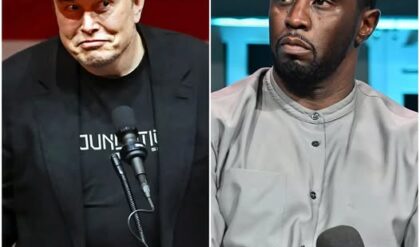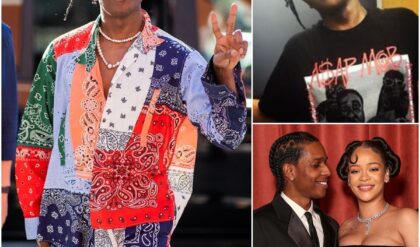The Supporting Cast Debate: Comparing LeBron’s 2009 Cavaliers to the Chicago Bulls’ First Three-Peat

The debate surrounding the greatness of LeBron James and Michael Jordan often revolves around their supporting casts and how those teammates contributed to their respective successes. A provocative claim recently emerged: the 2009 Cleveland Cavaliers had a better supporting cast than the Chicago Bulls during their first three-peat from 1991 to 1993. Let’s unpack this assertion and explore its implications in the context of NBA history.
In 2009, the Cavaliers boasted a roster that included Mo Williams, who earned an All-Star selection and was recognized as a key contributor to the team’s success. Some argue that Williams was superior to B.J. Armstrong, the starting point guard for the Bulls during their championship runs. While Armstrong was a solid player, Williams’ ability to score and create plays for others may give him the edge in this comparison.
Anderson Varejao, known for his tenacity and defensive prowess, was named to the NBA’s All-Defensive Second Team in 2009. He brought energy and grit, comparable to Horace Grant, who was a critical part of the Bulls’ success with his rebounding and defense. Many fans suggest that Varejao’s defensive contributions matched or even exceeded those of Grant, especially considering the evolving nature of the game.
Furthermore, Zydrunas Ilgauskas, a two-time All-Star, provided the Cavaliers with a legitimate offensive and defensive presence in the paint. When comparing him to the Chicago bigs of that era, Ilgauskas was arguably a more skilled player than those in the Bulls’ rotation. His scoring ability and rebounding made him a pivotal part of the Cavaliers’ offense, a factor that was crucial in their run to the NBA Finals.

Delonte West, a versatile guard, also deserves mention. West’s offensive skills and defensive capabilities made him a valuable asset, perhaps even better than any bench player the Bulls had during their early championship runs. His ability to shoot from the perimeter and create plays provided the Cavaliers with depth and flexibility that was crucial in tight games.
Despite these strengths, it’s essential to consider the dynamics of how these players complemented their superstars. Michael Jordan’s leadership and work ethic played a significant role in the development of his teammates. Players like Horace Grant have often remarked on how Jordan made practices more challenging than games, pushing them to elevate their performance. Scottie Pippen, often seen as Jordan’s right-hand man, has openly acknowledged that much of his growth as a player stemmed from spending countless hours in the gym with Jordan, who helped him build the confidence necessary to perform at a high level.
In contrast, critics of LeBron often argue that he has pursued assembling a “superteam” by bringing in high-profile players to bolster his chances of winning championships. This shopping approach to team-building contrasts sharply with Jordan’s experience, where he developed his teammates organically over time, fostering a sense of unity and resilience within the Bulls.
The question then arises: how did Jordan win three consecutive championships with the Bulls while LeBron only led the Cavaliers to one Finals appearance during the same timeframe? The answer lies in the chemistry and development fostered by Jordan’s leadership, which created a culture of accountability and excellence. The Bulls were not just a collection of talented individuals; they were a cohesive unit that understood their roles and executed them flawlessly.
Ultimately, while the 2009 Cavaliers may have had a roster that, on paper, rivaled the Bulls’ first three-peat, the intangible elements—leadership, development, and chemistry—played a critical role in the Bulls’ sustained success. The debate about LeBron and Jordan’s legacies will undoubtedly continue, but this comparison sheds light on how the context of their respective supporting casts influences our understanding of their greatness. In sports, it’s not just about having talent; it’s about how that talent is cultivated and utilized in pursuit of victory.
News
Dre must pay his ex-wife $3.5 million per year
Rapper Dr. Dre was ordered by the court to pay his ex-wife Nicole Young $3.5 million per year after the divorce. On July 22, People’s source said that a judge in Los Angeles asked Dr. Dre (real name Andre Romelle…
Dr. Dre Poses with ‘Hero’ Paul McCartney in Instagram Snap: ‘Paul McCartney Is Cool AF’
The seven-time Grammy-winning rapper documented the epic moment when he met Sir Paul McCartney, whom he called one of his “heroes” PHOTO: DR. DRE/INSTAGRAM Even Dr. Dre gets starstruck! The seven-time Grammy-winning rapper, 56, met one of his “heroes” — Sir Paul McCartney —…
Marsha Ambrosius & Dr. Dre Announce New ‘Casablanco’ Joint Album/Says It’s Some of Their Best Work!
Marsha Ambrosius & Dr. Dre Announce New ‘Casablanco’ Joint Album/Says It’s Some of Their Best Work! It’s been a hot minute since we’ve heard some new music from Marsha Ambrosius but her brief hiatus is about to come to an end. The…
Lil Eazy-E Calls Out Dr. Dre For Not Being Present At Street Naming: “All Of The West Coast Should Be”
He called out the fact that Dre wasn’t present during the street naming. In a recent interview with TMZ at the unveiling of the street named after his late father, Eazy-E, Lil Eazy-E had some words for Dr. Dre. In fact, issued a public…
EAZY-E HAS ‘REELS’ OF UNRELEASED MUSIC: ‘HE HAD SONGS WITH GUNS N’ ROSES’
On March 26, 1995, Hip-Hop lost one of its greatest visionaries when Eric “Eazy-E” Wright passed away at only 30 years old. Shortly before his passing, Eazy had just patched up old wounds with Ice Cube in a moment that was depicted in the…
DR. DRE ANNOUNCES NEW ALBUM WITH MARSHA AMBROSIUS
Dr. Dre has announced he’s completed an entire album with Floetry singer Marsha Ambrosius. The West Coast legend took to Instagram on Sunday (December 12) to announce the project titled Casablanco, while sharing a selfie with a room full of musicians. KEVIN MAZUR/GETTY IMAGES FOR…
End of content
No more pages to load











